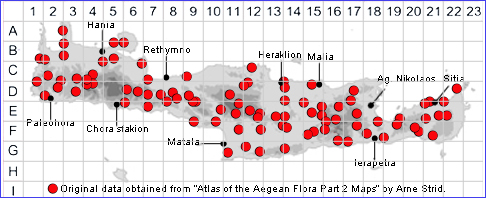SPECIES DESCRIPTION
ROMULEA BULBOCODIUM
Family and Genus:- See- IRIDACEAE
Common Names:- None
Homotypic Synonyms:- Crocus bulbocodium, Ixia bulbocodium, Trichonema
bulbocodium.
Meaning:- Romulea (L) For Romulus, founder of Rome.
Bulbocodium (Gr) Bulb-headed.
General description:- Herbaceous plant, with erect, hairless stems.
Scape:-
1) 1- to 6-flowered.
.
Leaves:-
1) Basal, 2, 25-30 cm x 0·8-2 mm, curved and procumbent or straight and
ascending.
2) Cauline, up to 5.
Flowers:-
1) Very variable in colour; tube and throat usually yellow; segments white to lilac or
violet, greenish or with 1-5 dark lines outside.
2) Bracts, 1-2·1 cm, purplish or with reddish-brown dots, with a very narrow
scarious, margin.
3) Bracteole, equalling the bract but wider, acute, (obtuse when flattened out),
scarious, or with a narrow green keel, brownish.
4) Perianth, (1-)2-3·5(5·5) cm; tube 3·5-8 mm.
5) Segments, elliptical to oblong-oblanceolate, usually acute.
6) Filaments, hairy below.
7) Anthers, top reaching to about the middle of the segments or a little higher.
Fruit:-
1) Capsule, oblong to globose.
2) Seeds, usually numerous, globose, brownish, without a strophiole.
Key features:-
1) Flowers, variable in colour, but not with darker veins inside.
2) Stigmas, usually above the top of the anthers.
3) Perianth, (1-)2-3·5(-5·5) cm.
Habitat:- Seasonally damp grassland, rocky slopes with open dry shrubby
vegetation, gravelly flats, often near the sea, but ascending to 1600 m. in dolines.
Distribution:- Widespread and common throughout the Mediterranean but not the
Balearic Is., Cyprus or parts of the extreme E. Mediterranean. Widespread and
common on Crete.
Flowering time:- Late Feb to early May.
Photos by:- Steve Lenton

